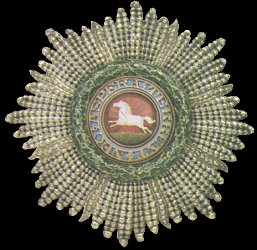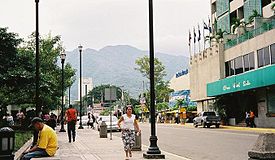Anne Perry (born October 28, 1938), born Juliet Hulme in England, is a British historical novelist and convicted murderer (see also Parker-Hulme murder).
Early life
Main article: Parker-Hulme murder Murder and trial
Murder and trial
After being released from prison, Juliet returned to England and became a flight attendant. For a period she lived in the United States, where she joined The Church of Jesus Christ of Latter-day Saints. She later settled in the Scottish village of Portmahomack where she lived with her mother. Her father went on to a distinguished scientific career, heading the British hydrogen bomb programme.
Juliet took the name "Anne Perry", the latter being her step-father's surname. Her first novel, The Cater Street Hangman, was published under this name in 1979. Her works generally fall into one of several categories of genre fiction, including historical mystery novels and fantasy. Many of them feature a number of recurring characters, most importantly Thomas Pitt, who appeared in her first novel, and amnesiac police inspector William Monk, who first appeared in her 1990 novel The Face of a Stranger. As of 2003 she had published 47 novels, and several collections of short stories. Her story "Heroes", which first appeared the 1999 anthology Murder and Obsession, edited by Otto Penzler, won the 2001 Edgar Award for Best Short Story.
In March 2006, Perry said that while her relationship with Pauline Parker was obsessive, they were not lesbians, as (arguably) portrayed in the film Heavenly Creatures. Pauline (under another name) still lives in New Zealand. She and Anne are not believed to have had any contact since their trial, as required by the conditions of their release. (NZ Herald). Recently Perry was included as an entry in Ben Peek's Twenty-Six Lies/One Truth, a novel exploring the nature of truth in literature.
New life
Each series is listed in internal chronological order, according to the author's website [1].
Bibliography
The Face of a Stranger
A Dangerous Mourning
Defend and Betray
A Sudden, Fearful Death
The Sins of the Wolf
Cain His Brother
Weighed in the Balance
The Silent Cry
A Breach of Promise
The Twisted root
Slaves of Obsession
Funeral in Blue
Death of a Stranger
The Shifting Tide
Dark Assassin Featuring William Monk
The Cater Street Hangman (1979)
Callander Square (1980)
Paragon Walk (1981)
Resurrection Row (1981)
Bluegate Fields (1984)
Rutland Place (1983)
Death in Devil's Acre (1985)
Cardington Crescent (1987)
Silence in Hanover Close (1988)
Bethlehem Road (1990)
Highgate Rise (1991)
Belgrave Square (1992)
Farrier's Lane (1993)
The Hyde Park Headsman (1994)
Traitors Gate (1995)
Pentecost Alley (1996)
Ashworth Hall (1997)
Brunswick Gardens (1998)
Bedford Square (1999)
Half Moon Street (1998)
The Whitechapel Conspiracy (2001)
Southampton Row (2002)
Seven Dials (2003)
Long Spoon Lane (2005)
African Passage (due April 7, 2008) Featuring Thomas Pitt
No Graves As Yet
Shoulder the Sky
Angels in the Gloom
At some Disputed Barricade (October 2006 UK. 18th March 2007, USA)
We Shall Not Sleep (10th April,2007, USA) The World War 1 series
A Christmas Journey
A Christmas Visitor
A Christmas Guest (Winter 2006)
A Christmas Secret © 2006 The Christmas stories
Tathea
Come Armageddon
A Dish Taken Cold
Death By Dickens (Short stories by various authors)
Death by Horoscope (Short stories by various authors)
I'd Kill For That (One novel written by various authors)
The One Thing More
Letter From The Highlands
Much Ado About Murder (Short stories by various authors)
 Murder and trial
Murder and trialAfter being released from prison, Juliet returned to England and became a flight attendant. For a period she lived in the United States, where she joined The Church of Jesus Christ of Latter-day Saints. She later settled in the Scottish village of Portmahomack where she lived with her mother. Her father went on to a distinguished scientific career, heading the British hydrogen bomb programme.
Juliet took the name "Anne Perry", the latter being her step-father's surname. Her first novel, The Cater Street Hangman, was published under this name in 1979. Her works generally fall into one of several categories of genre fiction, including historical mystery novels and fantasy. Many of them feature a number of recurring characters, most importantly Thomas Pitt, who appeared in her first novel, and amnesiac police inspector William Monk, who first appeared in her 1990 novel The Face of a Stranger. As of 2003 she had published 47 novels, and several collections of short stories. Her story "Heroes", which first appeared the 1999 anthology Murder and Obsession, edited by Otto Penzler, won the 2001 Edgar Award for Best Short Story.
In March 2006, Perry said that while her relationship with Pauline Parker was obsessive, they were not lesbians, as (arguably) portrayed in the film Heavenly Creatures. Pauline (under another name) still lives in New Zealand. She and Anne are not believed to have had any contact since their trial, as required by the conditions of their release. (NZ Herald). Recently Perry was included as an entry in Ben Peek's Twenty-Six Lies/One Truth, a novel exploring the nature of truth in literature.
New life
Each series is listed in internal chronological order, according to the author's website [1].
Bibliography
The Face of a Stranger
A Dangerous Mourning
Defend and Betray
A Sudden, Fearful Death
The Sins of the Wolf
Cain His Brother
Weighed in the Balance
The Silent Cry
A Breach of Promise
The Twisted root
Slaves of Obsession
Funeral in Blue
Death of a Stranger
The Shifting Tide
Dark Assassin Featuring William Monk
The Cater Street Hangman (1979)
Callander Square (1980)
Paragon Walk (1981)
Resurrection Row (1981)
Bluegate Fields (1984)
Rutland Place (1983)
Death in Devil's Acre (1985)
Cardington Crescent (1987)
Silence in Hanover Close (1988)
Bethlehem Road (1990)
Highgate Rise (1991)
Belgrave Square (1992)
Farrier's Lane (1993)
The Hyde Park Headsman (1994)
Traitors Gate (1995)
Pentecost Alley (1996)
Ashworth Hall (1997)
Brunswick Gardens (1998)
Bedford Square (1999)
Half Moon Street (1998)
The Whitechapel Conspiracy (2001)
Southampton Row (2002)
Seven Dials (2003)
Long Spoon Lane (2005)
African Passage (due April 7, 2008) Featuring Thomas Pitt
No Graves As Yet
Shoulder the Sky
Angels in the Gloom
At some Disputed Barricade (October 2006 UK. 18th March 2007, USA)
We Shall Not Sleep (10th April,2007, USA) The World War 1 series
A Christmas Journey
A Christmas Visitor
A Christmas Guest (Winter 2006)
A Christmas Secret © 2006 The Christmas stories
Tathea
Come Armageddon
A Dish Taken Cold
Death By Dickens (Short stories by various authors)
Death by Horoscope (Short stories by various authors)
I'd Kill For That (One novel written by various authors)
The One Thing More
Letter From The Highlands
Much Ado About Murder (Short stories by various authors)


 Politics
Politics

 Support crew
Support crew LM — CSM docking
LM — CSM docking

 Singing career
Singing career
 Other religions
Other religions Scientific perspectives
Scientific perspectives Superficial anatomy
Superficial anatomy Other branches
Other branches
 Arthur J. Finkelstein (born
Arthur J. Finkelstein (born 

 History
History Lefthit
Lefthit